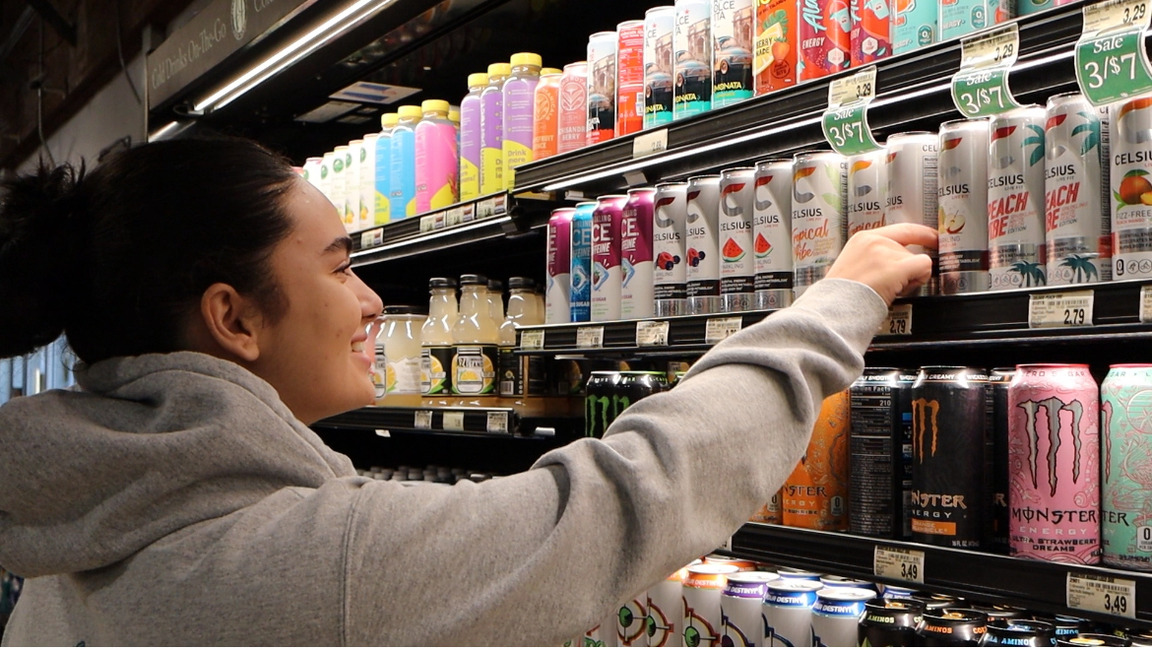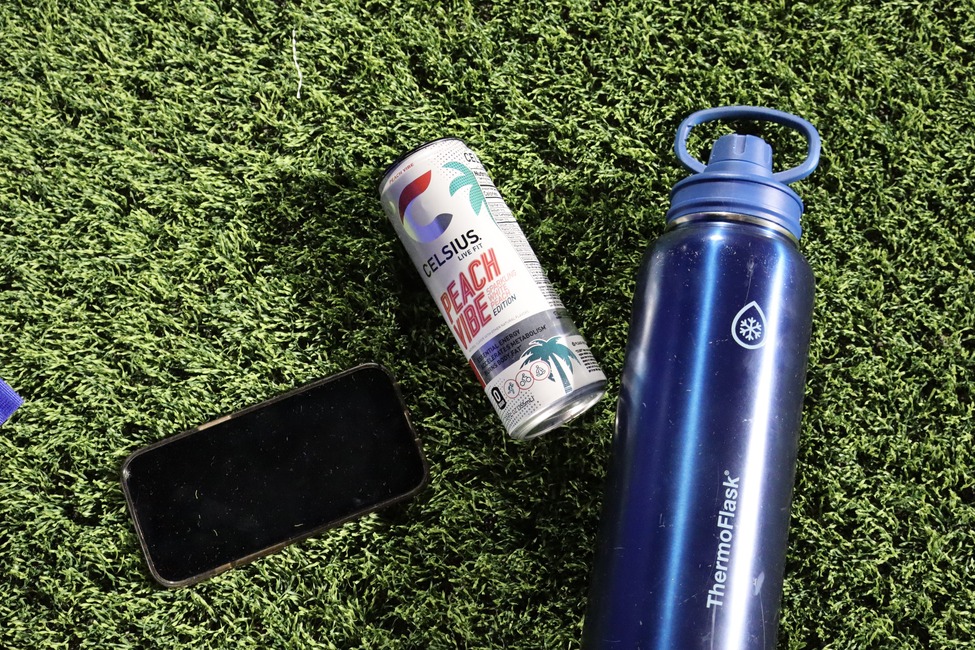

Crack the can, take a sip, and feel the buzz. But at what cost?
For a growing number of athletes, energy drinks have become a pre-game ritual, just as common as putting on your uniform. But the secret to more stamina isn’t in a can.
According to the National Federation of State High School Associations website in an article on September 10, 2024, emergency department visits due to energy drink consumption are on the rise, doubling between 2007 and 2011, with 10 percent requiring hospitalization.
According to the same article, “A more recent study focusing on adolescents aged 13 to 19 found alarming trends, indicating that 40 percent experienced adverse reactions after consuming energy drinks,” said NFHS. These adverse reactions include high blood pressure, tachycardia, anxiety, dehydration and insomnia.
So if these energy drinks cause such harmful effects, why do athletes keep using them?

Energy drinks like CELSIUS and C4 are being heavily marketed to athletes through endorsement and NIL deals. Specifically, Celius’s “Live Fit” slogan resonates with young athletes striving to perform at their best despite limited sleep.
“Athletes tend to rely on energy drinks, seeking energy elsewhere, because they don’t have time in the day to sleep anymore, due to rigorous school curriculums,” said Hannah Duszynski, associate athletic trainer at Xavier.
In truth, most athletes are not educated on the subject, and the true ingredients of the drink are masked.
Masked under proprietary blends, companies often hide the true ingredients of their drinks. This includes sugar and caffeine intake, which give athletes the “boost” they seek.
“The masked sugar and caffeine intake gives athletes a false sense of security. They have this brief period of high energy because of the caffeine, and then they quickly crash. This leads to poor performance and an increased risk for injury,” Duszynski said.

According to Hannah Cozby at Texas A&M Dietetics the main stimulant used in these drinks is caffeine. Unlike food, caffeine does not provide energy (ATP). Instead, it alters the brain chemistry.
So the very idea of “energy” drinks is misleading from the start.
Additionally, caffeine acts as an adenosine antagonist, blocking adenosine from binding to brain receptors that regulate sleep and memory. That is why one of the most common side effects is insomnia, or trouble sleeping.
So not only do these drinks fail to deliver real energy, they also create a cycle of sleeplessness and dependence on even more energy drinks the next day.
That is not to say all caffeine is bad. According to Cozby, caffeine is beneficial in small dosages, under 200 mg, but some of these drinks contain up to 400 mg.
The NCAA actually limits 500–800 mg caffeine within two to three hours of a sports event. Which poses the question, why don’t high school sports organizations set limits?

With so many potential risks, it’s clear that athletes need better, safer ways to sustain their energy. Fortunately, there are healthier alternatives that truly support performance, without the crash.
According to Duszynski, consistent sleep of at least eight hours, proper hydration and balanced meals are essential to refueling the mind and body. Nutrient-dense foods like complex carbs, protein and healthy fats are where real energy comes from, not sugar and stimulants.
In the end, athletic performance doesn’t come from a can. Energy drinks may offer a quick fix, but their effects fade fast, leaving athletes drained and dependent.
Head track and field coach Jarret Eaton gives his insight on high school athletes’ use, and possibly abuse, of energy drinks. This episode explores the effects these drinks have on physical and mental performance, as well as on an overall athlete’s well-being.

